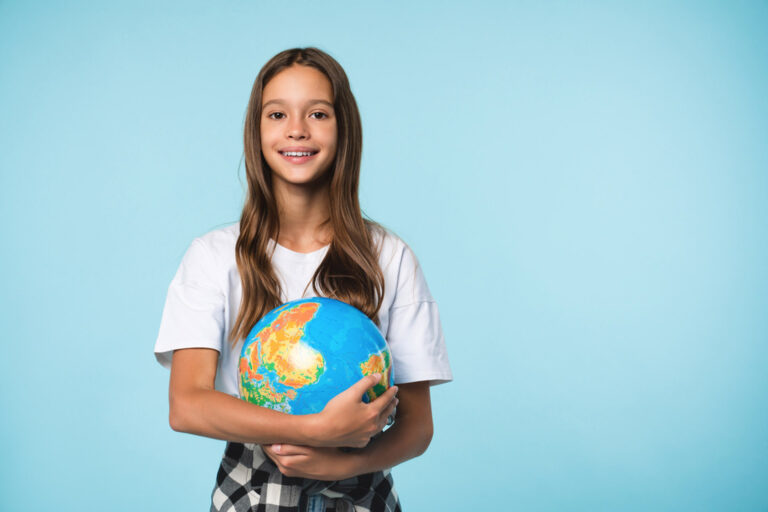Earth Day: Invest in Our Planet
Every year on April 22, we celebrate Earth Day. Earth Day is the largest nonsecular holiday, celebrated by 1 billion people across 190 countries. The theme of this year’s Earth Day is “Invest in Our Planet”. What does it mean to invest in our planet, you may ask? EarthDay.org tells us investing in our planet means that,
“As individuals, we have the simple yet effective power to make our voices heard through our choices, our civic actions, and our personal interactions. What each of us does, and how we do it, has a huge ripple effect on our ecosystems, and on the pace of corporate and government action.”
How was Earth Day started?
Since 1970, people around the world have honored Earth Day by taking strides to protect and improve the health of our environment. However, the history of Earth Day started under very different circumstances. In 1960s America, pollution was at an all-time high; Denis Hayes, the first Earth Day national coordinator, details the harmful effects of pollution in those times,
“In Los Angeles, the estimates were that simply breathing was the equivalent of smoking two packs of cigarettes a day. We had rivers that were catching on fire, lakes that were dying, the American national emblem -the bald eagle- was on the verge of extinction.”
After witnessing the devastating effects of the Santa Barbara oil spill, Americans began to realize that action needed to be taken. Citizens began hosting clean-up projects and concerts to draw attention to the matter. The efforts continued as people of every age, social class, and political affiliation gathered across the globe, protesting and participating in rallies in hopes of political action. The grass-roots campaign eventually gathered an estimated 12,000 events with around 20 million total participants. Due to the fervent efforts of local citizens, this worldwide holiday was finally brought to life on April 22, 1970, by US Senator Gaylord Nelson as a nationwide teach-in. Today, Earth Day has led to the establishment of numerous environmental laws and programs, including the EPA, Clean Air Act, Clean Water Act, and more.
Why is Earth Day important?
In the early ages of mankind, human survival depended on earth’s resources; as hunter-gatherers, we relied on nature to feed us, protect us, and keep us alive. As humans evolved, we learned to tame nature and alter the environment for our benefit. However, this was not a mutually beneficial exchange; as humans industrialize, nature diminishes. Today, we live in an age in which the earth’s survival has become dependent on us. We continue to witness the consequences of industrial pollution first-hand in recurring natural disasters around the world. The ubiquitous threat of earthquakes, flash floods, wildfires, pollution, and deforestation continues to devastate humankind, wildlife, and the environment. So, is there hope for our planet’s future- and is it possible to create a world where both humans andnature can survive? National Today puts it like this:
“Increasing natural disasters, extreme weather, and rising global temperatures may seem impossible for one human, let alone millions or even billions of humans, to slow down, or stop. It has been reported that coral reefs are dying, we see pictures of animals on land and in the ocean with trash in their bellies or around their body, and corporate factories and large companies around the world continue to pollute our air and our living spaces. But a small action, like picking up litter on the sidewalk that may have otherwise ended up around the neck of an animal or in the ocean, still makes an impact — a step in the right direction, and an important change.”
How can I contribute?
Though the large-scale issue of pollution may seem intimidating and unresolvable, it comes down to the small steps we take every day that will ultimately make a difference in preserving our earth. According to National History Museum,
“Our planet’s global ecology has never been in such a critical state as it is today. But we have also never been better equipped with the tools to understand what is happening and what needs to be done.”
With that in mind, here are some easy ways that you can strive to become more eco-friendly in your everyday routine.
- Make use of your recycling bin.
- Swap plastic water bottles for reusable water bottles.
- Switch to reusable shopping bags.
- Carry reusable utensils with you. (I like to attach a reusable straw carrier to my keychain.)
- Wash your clothes in cold water.
- Start composting your produce.
- Try thrifting rather than buying new clothes and furniture.
- Start a carpool system at work.
- Make the switch to LED lightbulbs.
- Volunteer at local environmental cleanups.
- Donate to The Canopy Project (as little as $1 can plant a tree!)
How can I incorporate Earth Day into my lesson plans?
Environmental education is important for children of all ages. Here are some fun activities that both you and your students can enjoy this Earth Day.
Movie Day
Movies are a great educational tool that can teach students so many important lessons. The films The Loraxand Wall-E put a fun spin on environmentalism for students of all ages. For a shorter option, opt for a brief educational video on Earth Day by PBS (for younger students) or How to Save our Planet by WWF International (for older students).
Outdoor Class
Spending time in nature is important for all ages! Freshen up your class setting by moving your lesson plan outside in the spirit of Earth Day.
Interactive Lesson Plans
PBS LearningMedia has some incredible resources for your students to get some hands-on Earth Day learning. Check out lesson plans, videos, and more here.
Research Activity
Break students into groups and research the top causes of environmental pollution. Then, have them come up with a creative pitch or slideshow on ways to solve them relating to inventions, organizations, and policy.
Nature Walk
Take your class along for a walk in nature to gather supplies, draw scenery, or have a scavenger hunt. View more nature walk activities here.
Become a Teacher. Change Lives.
If you are passionate about impacting the world around you there are few places where you can influence the future as much as a teacher. Teachers have the ability to build students up and set them on a positive course that can have a ripple effect for future generations.
If you are interested in becoming a teacher, check out our online teacher certification process and you could be teaching in a matter of weeks.




